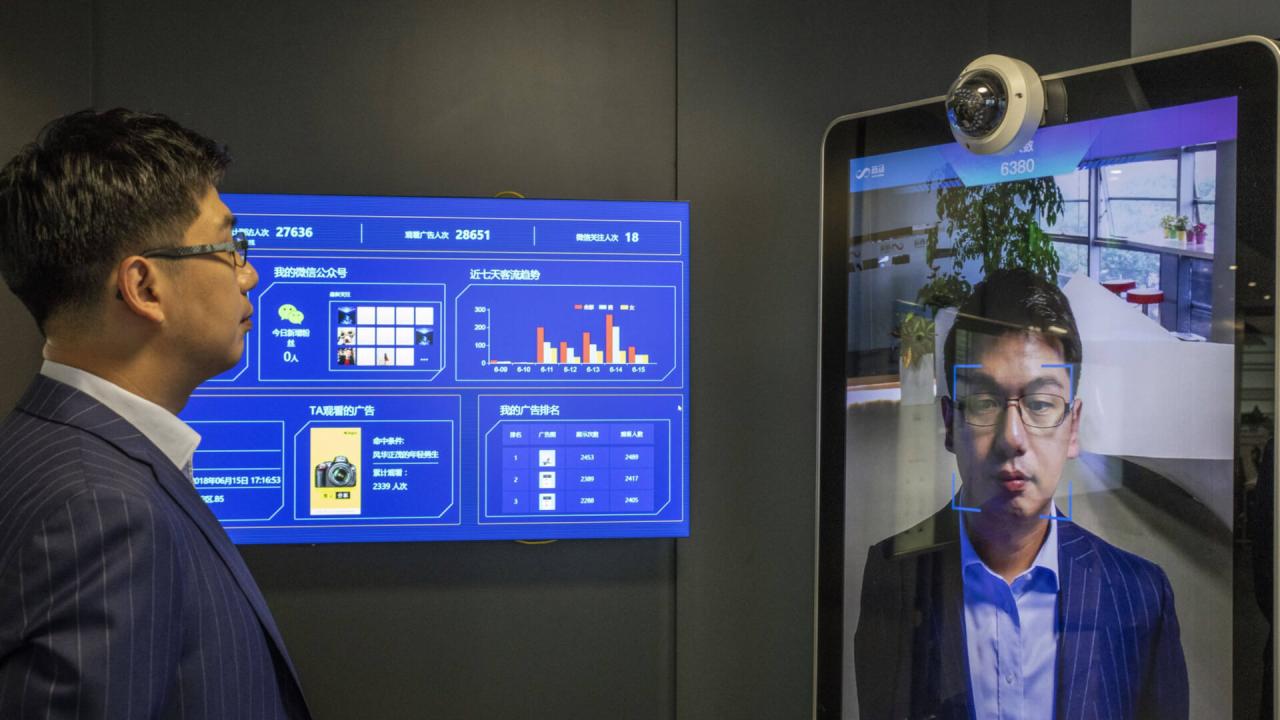The Looming Cryptographic Apocalypse
The world’s current digital security infrastructure, which underpins everything from global financial transactions and national defense networks to secure email and personal bank accounts, rests almost entirely on the mathematical complexity of Public-Key Cryptography (PKC).
This system, specifically algorithms like RSA and Elliptic Curve Cryptography (ECC), relies on the fact that even the most powerful supercomputers would take thousands or even millions of years to factor large prime numbers or solve discrete logarithm problems.
However, this foundational assumption of digital trust is facing an existential crisis with the imminent rise of fault-tolerant quantum computers, which, when scaled, possess the raw processing power to run Shor’s Algorithm and break these currently unbreakable encryption schemes in mere seconds.
This isn’t a distant, theoretical problem; it’s a tangible security time bomb known as the “Q-Day” event, demanding immediate, coordinated global action to migrate all critical data and systems before a large-scale quantum machine falls into the wrong hands.
The preparation required, known as the “Crypto-Agile Migration,” is a monumental, multi-decade undertaking that touches every layer of the internet, necessitating significant investment in new Post-Quantum Cryptography (PQC) standards and a complete overhaul of current digital security protocols.
Failure to act now means risking the retroactive decryption of sensitive, long-term data (the “Harvest Now, Decrypt Later” threat), which could cripple economies, compromise national security, and dissolve personal privacy as we know it.
Understanding the Quantum Vulnerability

The threat posed by quantum computing is highly specific but universally damaging: it targets the very mathematical hard problems upon which our current digital trust framework is built. The danger lies not in general computing speed, but in a handful of specialized quantum algorithms.
How Quantum Computers Shatter Current Crypto
A. Shor’s Algorithm: This algorithm is the primary threat, capable of efficiently finding the prime factors of large composite numbers in polynomial time, directly compromising the security of RSA and Diffie-Hellman key exchange protocols.
B. Grover’s Algorithm: While not a direct break, Grover’s algorithm significantly speeds up the search for solutions, effectively halving the security strength of symmetric-key encryption algorithms like AES (e.g., an AES-256 system is reduced to the security level of AES-128).
C. The Scope of Exposure: Virtually every secure online interaction is at risk, including TLS/SSL protocols securing websites, VPNs, digital signatures, cryptocurrency wallets, and all stored encrypted data.
D. The “Harvest Now, Decrypt Later” Threat: Sophisticated adversaries are already suspected of intercepting and storing vast quantities of encrypted communications today, knowing they can decrypt all of it instantly once a capable quantum computer is ready.
E. Digital Signature Compromise: Quantum attacks on digital signature algorithms could enable undetectable forgery of software updates, financial contracts, legal documents, and government certifications, leading to a total breakdown of digital authenticity.
The Race to Post-Quantum Cryptography (PQC)
The global security community, led by national standards bodies, is engaged in an intense, worldwide competition to develop and standardize new cryptographic algorithms that remain secure even when faced with a large-scale quantum computer. This new family of defenses is known as Post-Quantum Cryptography (PQC).
Leading Families of PQC Algorithms
A. Lattice-Based Cryptography: This approach uses geometric structures in high-dimensional spaces to create complex problems related to the shortest vector, which is computationally hard even for quantum computers; it’s currently considered the most promising general solution.
B. Code-Based Cryptography: Relying on the difficulty of decoding general linear codes (similar to error-correcting codes), this method, which includes schemes like McEliece, has a long security history but often requires larger key sizes.
C. Multi-Variate Polynomial Cryptography: These schemes use the difficulty of solving systems of non-linear polynomial equations over finite fields, offering speed but often facing challenges related to key management and standardization.
D. Hash-Based Signatures (Stateless and Stateful): Primarily used for digital signatures (like the XMSS or LMS schemes), these rely on the robustness of cryptographic hash functions, which are much less susceptible to quantum speed-up than factoring.
E. Isogeny-Based Cryptography: Built upon the properties of elliptic curves, this family offers potentially the smallest key sizes but remains mathematically complex and is currently less mature for widespread adoption than lattice methods.
The Monumental Task of Crypto-Agility
The transition from current algorithms to PQC is far more complex than a simple software update. It requires a comprehensive, systematic, and sustained effort across all layers of the digital infrastructure, a process called achieving Crypto-Agility.
Stages of the Crypto-Agile Migration
A. Discovery and Inventory: Organizations must first meticulously locate and catalogue every instance of cryptographic usage—including keys, certificates, protocols, and proprietary systems—a task often complicated by decades of legacy systems.
B. Risk Prioritization and Triage: Critical systems and data requiring long-term confidentiality (e.g., state secrets, intellectual property, long-term contracts) must be prioritized for PQC migration over less sensitive, short-lived data.
C. Algorithm Standardization and Testing: Before deployment, organizations must rigorously test the performance (speed, memory usage) and compatibility of the new PQC algorithms, which often have larger keys and slower signing speeds than their classic counterparts.
D. Hybrid Mode Deployment (Dual-Signature): To manage the transition, systems will initially use a hybrid approach, where data is simultaneously encrypted with both classic (RSA/ECC) and PQC algorithms, ensuring security even if one system is broken.
E. Automation and Orchestration: Given the scale, the entire process—from certificate issuance to key rotation—must be automated using advanced tools and centralized management platforms to maintain consistency and prevent human error in the complex migration.
Infrastructure and Hardware Evolution

The move to PQC is not purely a software problem; it demands significant upgrades and changes to the underlying hardware and network infrastructure that handles key generation and cryptographic processing.
Hardware Prerequisites for PQC
A. Trusted Platform Modules (TPMs) Upgrade: Hardware security modules (HSMs) and TPMs, which store cryptographic keys, need to be upgraded or replaced to securely handle the larger keys and different mathematical structures of PQC algorithms.
B. Network Bandwidth Adjustments: The larger key and signature sizes of some PQC schemes will require adjustments to network protocols and potentially impact transmission speed or data packet sizes in bandwidth-constrained environments.
C. Quantum Random Number Generators (QRNGs): Cryptography is only as strong as its randomness; true PQC requires reliable sources of entropy, leading to increased adoption of QRNGs to generate keys with genuine, physics-based randomness.
D. Secure Boot and Firmware Updates: Since PQC algorithms will be embedded deep within device firmware (for secure boot processes), robust and secure remote update mechanisms must be universally adopted to manage global PQC patches.
E. Cloud Service Provider Reliance: Organizations will heavily rely on major cloud providers (AWS, Azure, Google Cloud) to deploy PQC-ready infrastructure, shifting the burden of core hardware replacement to these hyperscalers.
The Geopolitical and Regulatory Landscape
The quantum threat is fundamentally a national and economic security issue, prompting governments and international bodies to take a central role in driving PQC development, standardization, and mandatory adoption schedules.
Governance and Security Imperatives
A. National Security Agency Directives: Governments are issuing strong mandates requiring the migration of classified and defense-related data to PQC on an accelerated timeline, recognizing the direct threat to military and intelligence communications.
B. International Standardization Efforts: The U.S. National Institute of Standards and Technology (NIST) PQC competition is globally influential, dictating the algorithms that will become the international benchmark for the post-quantum era.
C. Sector-Specific Mandates (Financial/Healthcare): Highly regulated industries, such as finance and healthcare, will face mandatory PQC deadlines to protect customer funds and sensitive personally identifiable information (PII).
D. Supply Chain Security: There is a critical need to ensure that the cryptographic libraries and hardware components supplied by third-party vendors are genuinely PQC-compliant and free of backdoors or vulnerabilities.
E. Quantum Key Distribution (QKD) Integration: While not a replacement for PQC, QKD, which uses quantum mechanics to guarantee secure key exchange, will be integrated into highly sensitive point-to-point communications (like government fiber links) as an additional layer of security.
Economic Impact and Investment Opportunities
The cryptographic transition represents a massive, non-optional IT expenditure for all sectors, but it simultaneously creates a huge market opportunity for those specializing in quantum-safe solutions, services, and hardware.
The PQC Investment Boom
A. Security Consulting and Auditing: A massive demand is emerging for specialized security consultants capable of auditing legacy systems and designing PQC migration roadmaps for large, complex organizations.
B. PQC Software Libraries: Companies focused on developing and maintaining highly optimized, secure, and easily integratable PQC software libraries will see significant growth as the transition accelerates.
C. Quantum-Safe Chip Manufacturing: The semiconductor industry will pivot to producing new generations of chips with integrated PQC-compatible hardware accelerators to handle the increased computational load efficiently.
D. Digital Identity Infrastructure: The entire digital identity and certification authority ecosystem must be rebuilt using PQC, creating investment opportunities in next-generation certificate management and Public Key Infrastructure (PKI).
E. Education and Workforce Development: Universities and training organizations are already experiencing a surge in demand for curricula focused on quantum computing, PQC mathematics, and crypto-agile engineering.
The Human Factor: Skills and Preparedness
Ultimately, the success of the PQC migration rests on the global availability of a highly specialized and skilled workforce. The mathematics involved are complex, and the potential for implementation errors is high.
Addressing the Skills Gap
A. The PQC Mathematician Shortage: There is a critical global shortage of cryptographers and mathematicians trained in the complex number theory and algebra underlying PQC, making talent acquisition highly competitive.
B. Developer Education and Tooling: Most current software developers lack training in implementing cryptographic primitives; they require new tools and libraries that abstract the complexity of PQC implementation away from application code.
C. Executive Awareness and Buy-In: IT and security teams must overcome a lack of awareness among non-technical executives, securing the multi-year funding and strategic support needed for a transition that offers no immediate, visible return on investment.
D. Vulnerability Disclosure Protocols: New, globally coordinated vulnerability disclosure protocols are needed specifically for PQC algorithms, as flaws in these foundational schemes could have catastrophic, widespread consequences.
E. Simulation and Quantum Testbeds: Researchers require sustained access to quantum computer simulators and early-stage quantum hardware to rigorously test PQC algorithms against realistic quantum attack scenarios.
Conclusion
The quantum threat to our current encryption is a certainty, not a mere possibility.
Ignoring this challenge is equivalent to leaving the keys to the entire global digital infrastructure under the doormat for any future adversary.
The move to Post-Quantum Cryptography (PQC) is a necessary, fundamental shift, demanding global cooperation and vast financial investment.
Success hinges on the rapid standardization, rigorous testing, and seamless, widespread deployment of the new PQC algorithms across every device and service.
Organizations must begin the complex process of inventorying their cryptographic assets and migrating to a crypto-agile architecture immediately.
The next decade will be defined by this silent war against the quantum computer, where the security of tomorrow is decided by the steps we take today.











